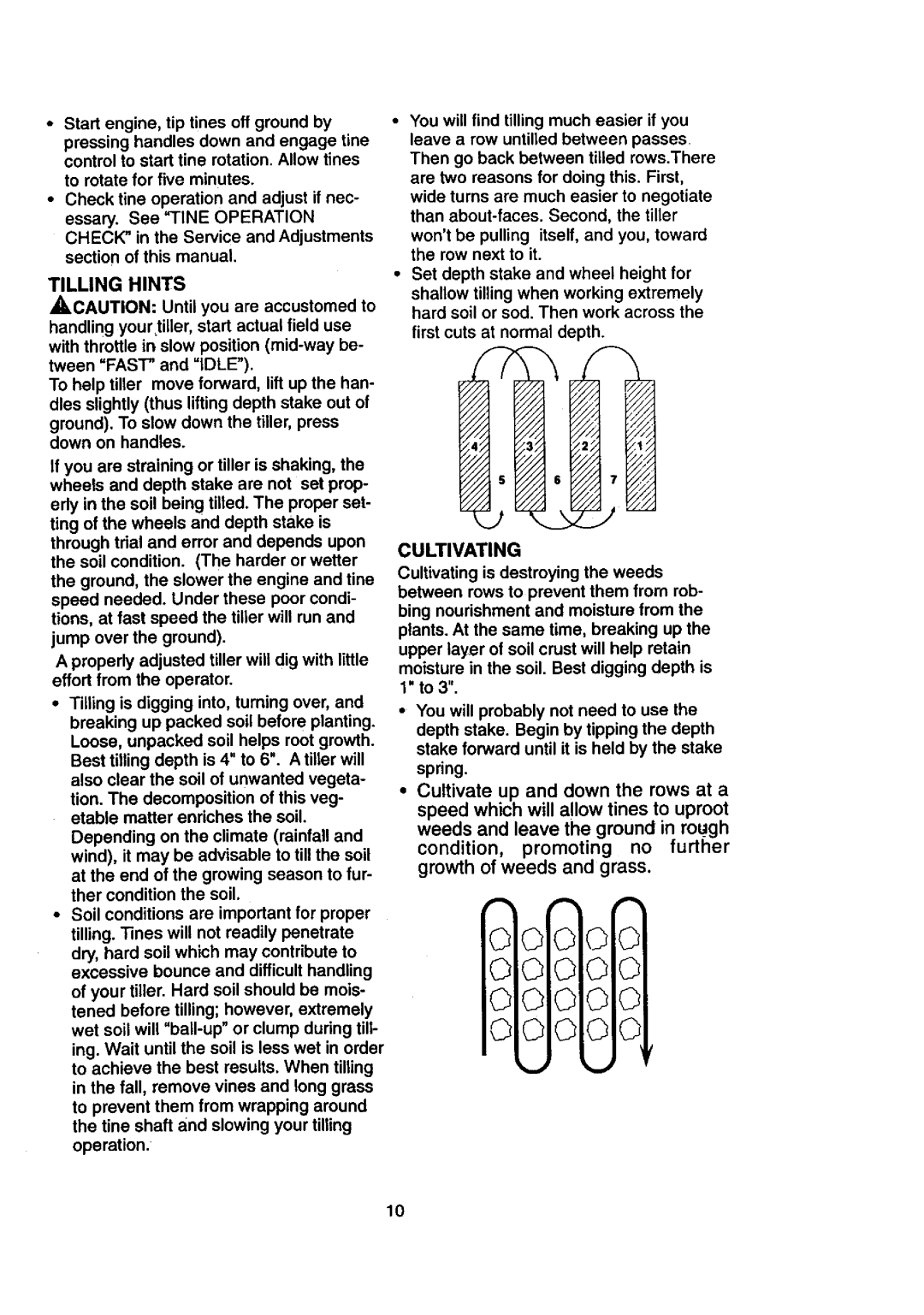
•Start engine, tip tines off ground by
pressing handles down and engage tine control to start tine rotation. Allow tines
to rotate for five minutes.
•Check tine operation and adjust if nec- essary. See "FINE OPERATION
CHECK" in the Service and Adjustments section of this manual.
TILLING HINTS
_CAUTION: Until you are accustomed to
handling yourtilier, start actual field use
with throttle in slow position
To help tiller move forward, lift up the han- dles slightly (thus lifting depth stake out of ground). To slow down the tiller, press down on handles.
If you are straining or tiller is shaking, the wheels and depth stake are not set prop- edy in the soil being tilled. The proper set- ting of the wheels and depth stake is through tdal and error and depends upon the soil condition. (The harder or wetter the ground, the slower the engine and fine speed needed. Under these poor condi- tions, at fast speed the tiller will run and jump over the ground).
A properly adjusted tiller will dig with little effort from the operator.
•Tilling is digging into, turning over, and breaking up packed soil before planting. Loose, unpacked soil helps root growth. Best tilling depth is 4" to 6". A tiller will also clear the soil of unwanted vegeta- tion. The decomposition of this veg- etable matter enriches the soil. Depending on the climate (rainfall and wind), it may be advisable to till the soil at the end of the growing season to fur- ther condition the soil.
•Soil conditions are important for proper tilling. Tines will not readily penetrate dry, hard soil which may contribute to excessive bounce and difficult handling of your tiller. Hard soil should be mois- tened before tilling; however, extremely wet soil will
You will find tilling much easier if you leave a row untilled between passes Then go back between tilled rows.There are two reasons for doing this. First, wide turns are much easier to negotiate than
Set depth stake and wheel height for
shallow tilling when working extremely hard soil or sod. Then work across the
first cuts at normal depth.
CULTIVATING
Cultivating is destroying the weeds between rows to prevent them from rob- bing nourishment and moisture from the plants. At the same time, breaking up the upper layer of soil crust will help retain moisture in the soil. Best digging depth is 1" to 3".
You will probably not need to use the depth stake. Begin by tipping the depth stake forward until it is held by the stake spring.
Cultivate up and down the rows at a speed which will allow tines to uproot weeds and leave the ground in rou_gh
condition, promoting no further growth of weeds and grass.
O OIO O oI
OOIO O
OOIO O
10
